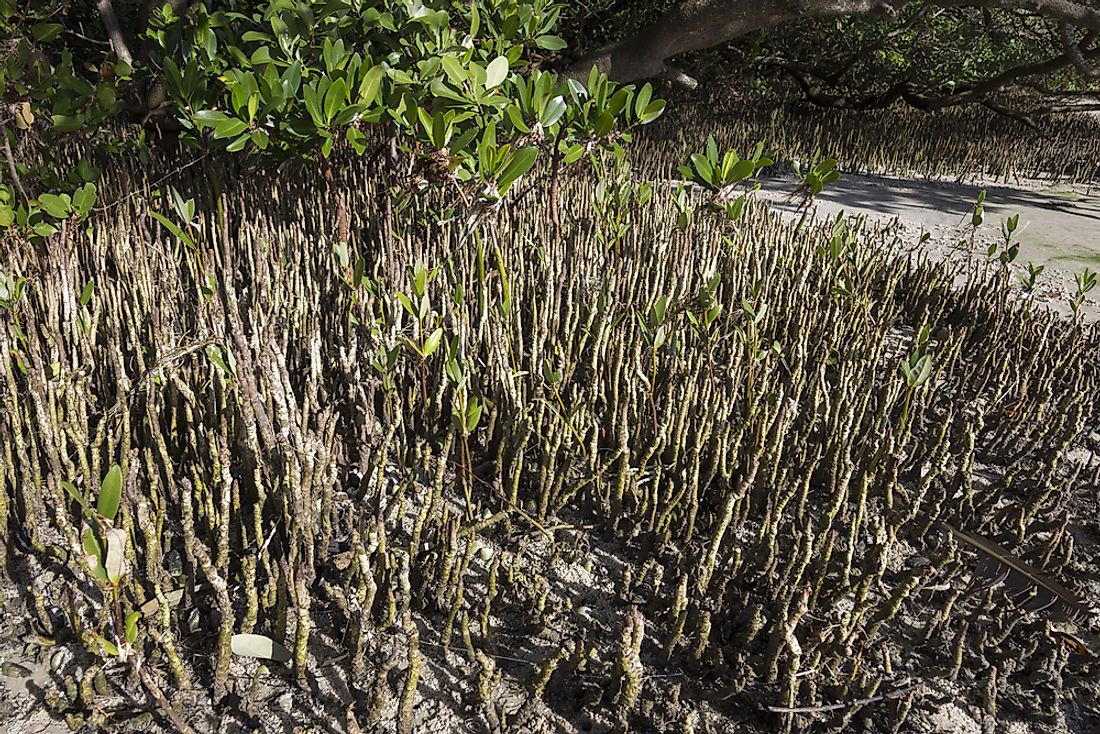Native Plants Of Mauritania

Mauritania has little forest cover with only 0.3% of the country covered in forest. The country has lost an average of 9,800 hectares per year between 1990 and 2000. Mauritania is home to over 1100 species of vascular plants. Although the climatic conditions of Mauritania are desertlike, the Sahelian climate which is characterized by one rainy season from July to October is responsible for the survival of most of the plant species in the country. Although most of the endemic plants have been destroyed as a result of deforestation, some native plants of Mauritania still exist.
Native Plants
Black Mangrove
Black Mangrove, Avicennia germinans, is a flowering plant species that grows in the tropical and sub-tropical regions. It thrives on the sandy shores that are reached by sea water. The name refers to the color of the heartwood and trunk. The seeds of a Black Mangrove are encased in a fruit. It does not grow on prop roots like most of the mangrove plants but possess the pneumatophores that allow for air circulation in the roots even when submerged in water. The leaves are whitish due to the salt excrete. The heartwood is dark in color while the sapwood is yellow to brown. The heartwood can float on water while the sapwood sinks in water. The wood is used for making poles, burning charcoal, and as a fuel. The tannin contained in the bark is used in making tan leather products.
Dwarf eelgrass
Dwarf eelgrass, Zostera noltii, is a species of seagrass found in shallow coastal waters. It has creeping rhizomes which run under the seabed. It grows 2-5 strap-shaped leaves out of its nodes on the rhizomes. The leaves also contain air spaces which make them float on water. Dwarf eelgrass is an important diet for whooper swan during winter. They are also important in reducing wave energy and may prevent soil erosion along the coastal line. Dwarf eelgrass has a low capacity to recover when buried due to short leaves and lack of vertical rhizomes. Its population has greatly declined though species is listed as least concern by the IUCN.
Hanza
Hanza, Boscia senegalensis, is a traditional food plant in Africa since it has a potential to improve nutrition and support sustainable land care. It is a perennial woody plant classified as a dicot. It can grow up to 4 meters in height under favorable conditions. Its leaves are leathery while it produces fruits that are clustered in small bunches. The seeds can rapidly lose viability when exposed to heat for long periods of time, creating a barrier to widespread growth. The leaves can be processed into medicinal applications. Apart from being a source of nutrition, Hanza prevents soil erosion by keeping the soil from being bare. It also acts as a buffer against wind and offers shades to the surrounding plants.
Threats to Native Plants of Mauritania
Logging and firewood collection are the major threats to the native plants of Mauritania. The demand for both industrial and domestic fuel has led to deforestation and cutting down of most tree species in the country. Land clearing for agriculture and settlement has also led to clearing of some of the valuable plants in Mauritania. Change of weather patterns and climate has affected the growth and spread some of these plants. Conservation measures need to be taken to preserve and conserve most of the native plants.
Native Plants Of Mauritania
| Native Plants of Mauritania | Scientific Name |
|---|---|
| Black Mangrove | Avicennia germinans |
| Dwarf Eelgrass | Zostera noltii |
| Hanza | Boscia senegalensis |
| Mauritanian Cattail | Typha elephantina |
| Karira | Capparis decidua |
| Habob | Stipagrostis obtusa |
| Salt Reed Grass | Desmostachya bipinnata |











